Ammu embroidered a kitchen towel
We bought dark kitchen towels to wipe our iron woks, which tend to leave rust-coloured stains—at least temporarily. But Ammu got her hands on one of them, and made it much too pretty to wipe anything with.
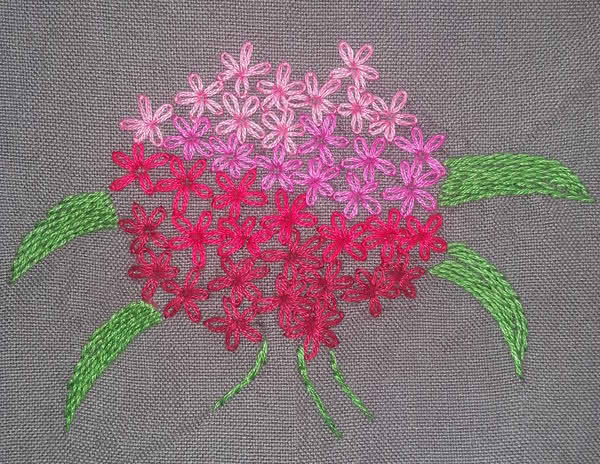
We bought dark kitchen towels to wipe our iron woks, which tend to leave rust-coloured stains—at least temporarily. But Ammu got her hands on one of them, and made it much too pretty to wipe anything with.

We visited Lakhudiyar in Uttarakhand to see cave paintings that look like they were made by a bored schoolboy waiting for a bus home.
I was at the UP Bird Festival in Chambal, tempted mostly by the memory of seeing many crocodiles. There were very few crocodiles this time, but we found a medium-sized Mugger Crocodylus palustris sunning itself on the bank towards the end of our trip.
I had promised Hassath that I would take a crocodile selfie but alas, I managed to omit the actual crocodile. The crocodile-shaped object up on the bank is (what else?) a log.
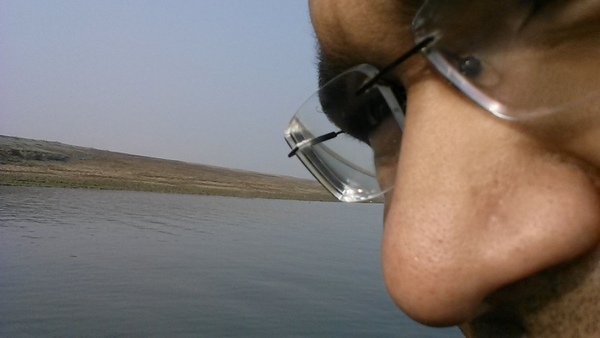
The crocodile was there, though, just beyond the edge of the frame.
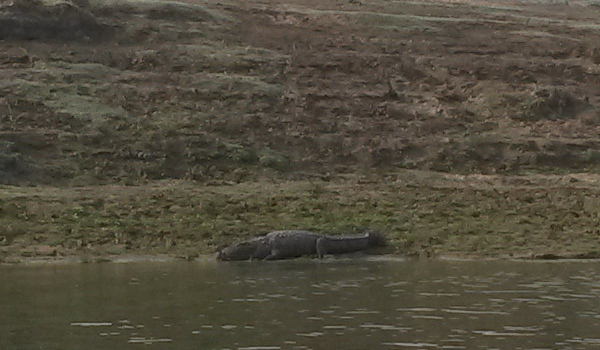
Today I recorded a Yellow-bellied Prinia Prinia flaviventris calling in the Typha reedbeds at Okhla Bird Sanctuary in New Delhi. The bird was very close to me—though I could not see it in the overgrown reeds—and one can hear its wing-snapping display in the recording. The incessant drone of Cicadas provides a backdrop.
Here's an MP3 file (which I created using Audacity), and here's an old photo of the species, also from Okhla.
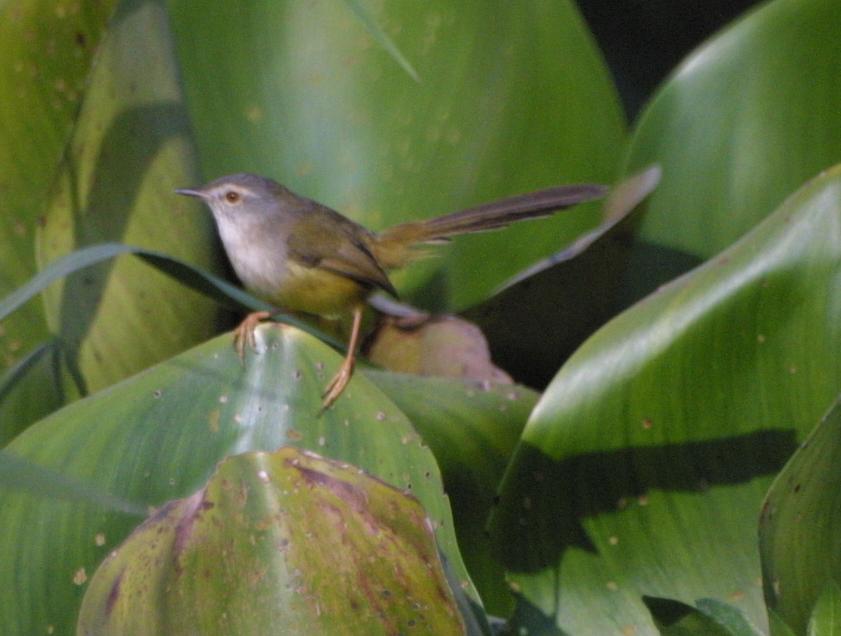
(There are much better photographs on OBI.)
This is the first time I have used my new Olympus LS-11 recorder, and I am very impressed with the sound quality I obtained, given my complete inexperience at nature sound recording. I used the default 44.1KHz/16-bit settings, with the "low" mic sensitivity setting, and a recording level of 10.
I am delighted to have been able to record one of my favourite singers as my first subject. I've always tried and failed to describe the call to people, but now I can let the bird speak for itself.
Last December, I went on a solo hike to Dayara Bugyal, an alpine meadow in the Garhwal Himalayas, at an altitude of some 3000m above sea level. In summer, it's a popular hiking destination, and shepherds bring their flocks there to graze, but I had the place all to myself.
I had planned to spend the first night next to Barnala Tal, a small lake just below the final ascent to Dayara. The instructions I got on how to find the lake were typically vague, however, and I had still not reached it by evening. I was tired, and decided to descend and camp next to the only water I'd found seen so far: a shallow marsh, with stinking water that turned out to be unsuitable even to filter.
As I pitched my tent, this buffalo skull was my only companion:
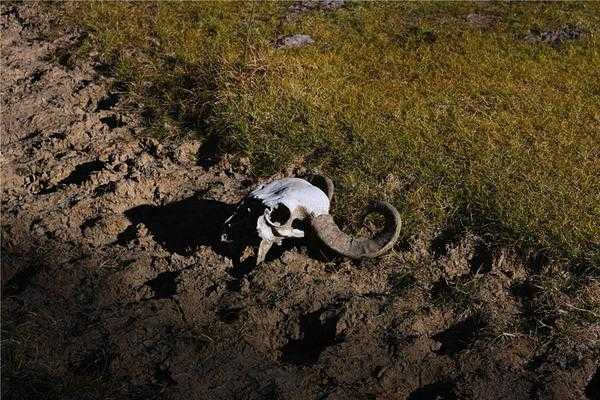
It was not until late the next morning that I found the lake, a mere 250m further than I'd ventured the previous day, hidden from me by a shallow rise. There was a couple of centimetres of ice on the lake, and I had to smash through it to fill my bottle.
Never has a drink of water been more welcome.
Baby squirrels looking adorably sinister as they take up positions around a telephone pole:
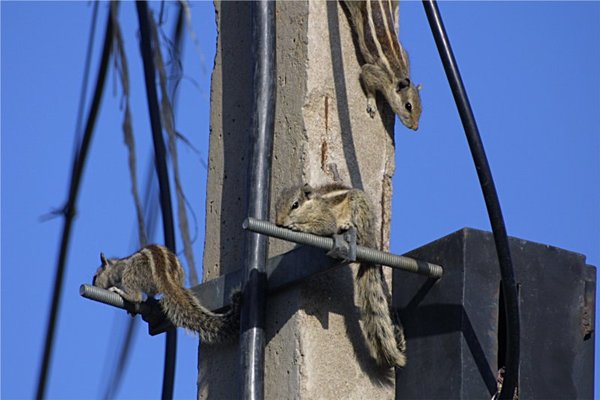
Now, where can I find a Morocco Mole?
Here's a very distinctive-looking moth I photographed near Sat Tal lake in Uttarakhand in September 2009.
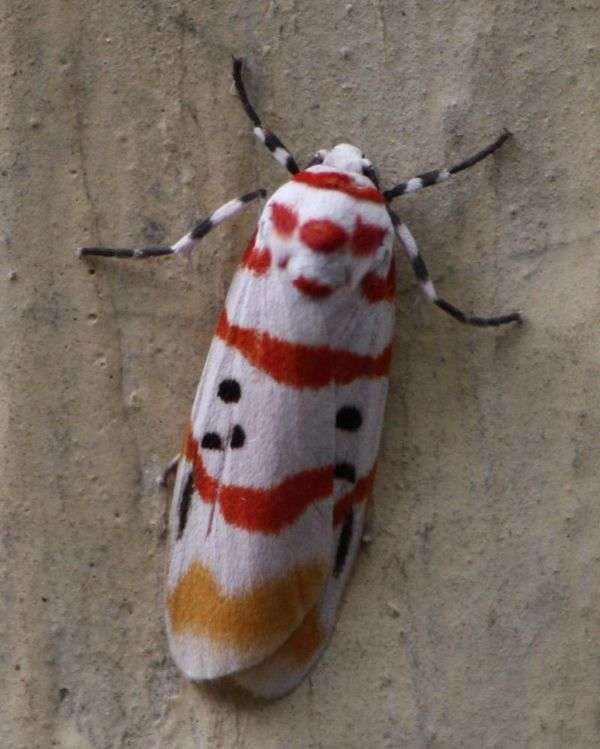
I don't know what species it is.
Update (2010-05-10): My friend Swati tells me it's a Cyana sp. (which means I still don't know what species it is :-).
Update (2017-06-02): Seven years later, Sanjay Sondhi of The Titli Trust identified my moth at a glance as Cyana belissima. Thank you, Sanjay!
I was going through some old photographs, and I found the following one from Hassath's and my first trip to Munsiari in December 2005.
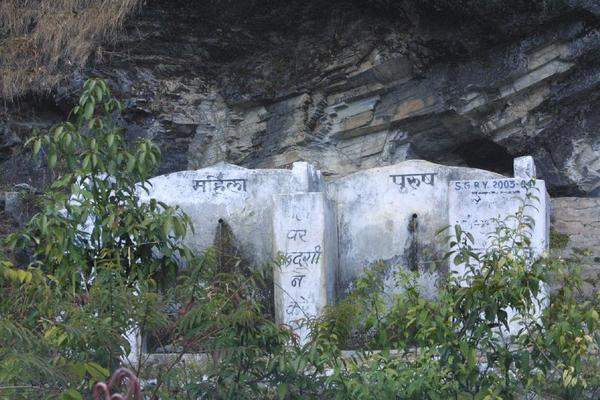
It shows two public bathrooms, both visible from the main road leading to Munsiari. The one on the left says "women", and the other one "men".